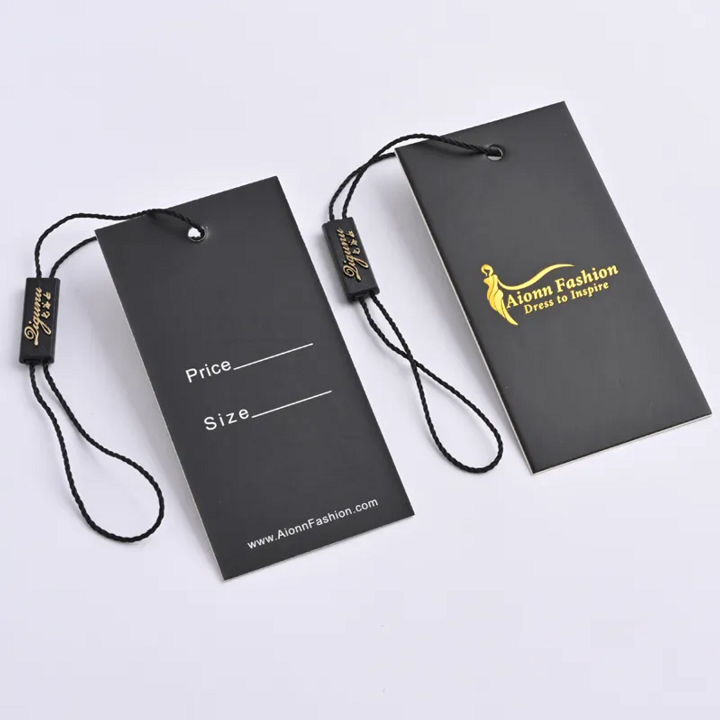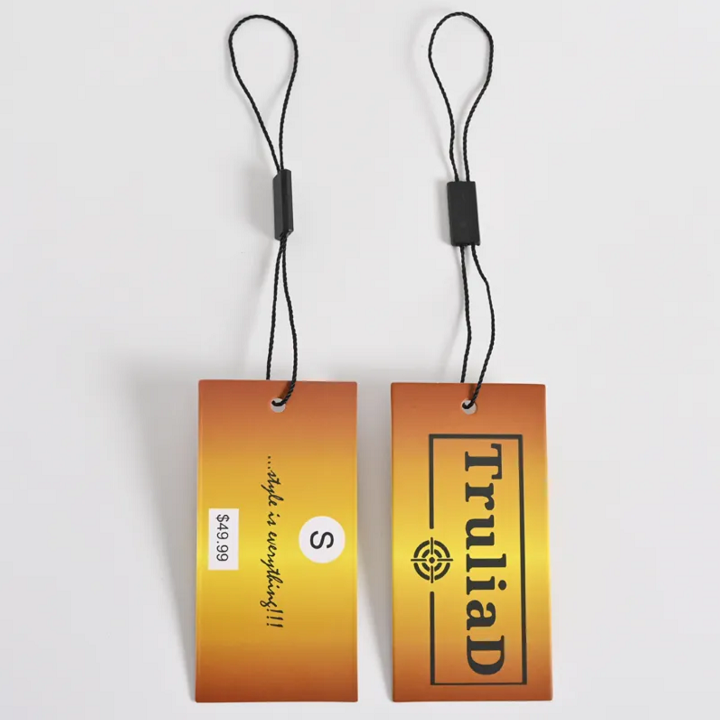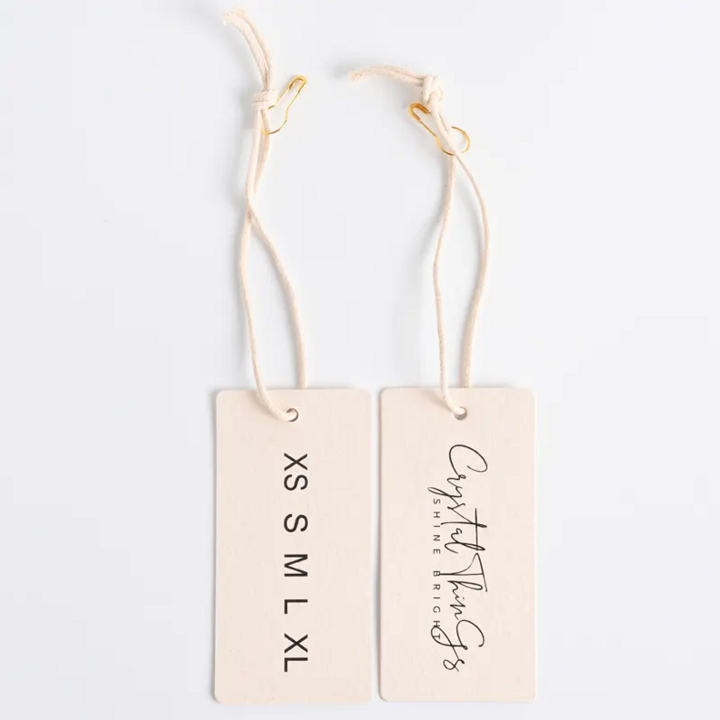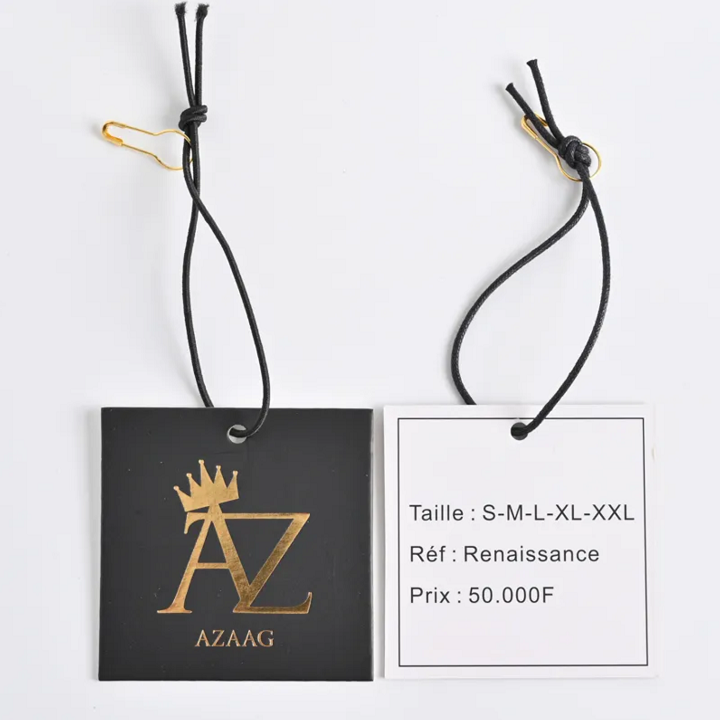Content Menu
● What Are Retail Swing Tags?
● Why Are Retail Swing Tags Important?
>> 1. Brand Identity
>> 2. Product Information
>> 3. Marketing Tool
>> 4. Enhanced Customer Experience
● Design Options for Retail Swing Tags
>> 1. Materials
>> 2. Shapes and Sizes
>> 3. Printing and Finishing
● Applications of Retail Swing Tags
>> 1. Fashion Industry
>> 2. Home Goods
>> 3. Food and Beverage
● How to Design Effective Retail Swing Tags
>> 1. Choose the Right Material
>> 2. Incorporate Branding
>> 3. Include Essential Information
>> 4. Add a Call to Action
● Additional Benefits of Retail Swing Tags
>> 1. Sustainability
>> 2. Seasonal and Limited Edition Tags
>> 3. Interactive Elements
>> 4. Cost-Effective Marketing
● Frequently Asked Questions (FAQs)
>> 1. What materials are commonly used for Retail Swing Tags?
>> 2. Can Retail Swing Tags be customized?
>> 3. Are Retail Swing Tags durable?
>> 4. Where can Retail Swing Tags be used?
>> 5. How do I design an effective Retail Swing Tag?
● Conclusion
In the competitive world of retail, Retail Swing Tags have become an essential tool for branding, product information, and customer engagement. These small yet impactful tags are more than just labels; they are a direct communication channel between your brand and your customers. But what exactly are Retail Swing Tags, and how can they enhance your brand's presence? Let's explore their significance, design options, and applications.
What Are Retail Swing Tags?
Retail Swing Tags are small tags attached to products, typically made from materials like cardstock, kraft paper, or plastic. They are designed to hang from items such as clothing, accessories, or home goods, providing essential information like brand names, product details, pricing, and care instructions. Their versatility and customizability make them a popular choice for retailers across various industries.

Why Are Retail Swing Tags Important?
1. Brand Identity
Retail Swing Tags serve as a canvas for your brand's identity. They can feature your logo, brand colors, and tagline, creating a cohesive and professional look. This helps reinforce brand recognition and leaves a lasting impression on customers.
2. Product Information
These tags provide crucial details about the product, such as size, material, care instructions, and pricing. This information helps customers make informed purchasing decisions.
3. Marketing Tool
Swing tags can include promotional messages, QR codes, or social media handles, encouraging customers to engage with your brand online. They can also highlight special offers or new collections.
4. Enhanced Customer Experience
Well-designed swing tags add a touch of elegance to your products, enhancing the overall customer experience. They can also include personalized messages, making customers feel valued.
Design Options for Retail Swing Tags
1. Materials
Cardstock: Durable and versatile, ideal for a premium look.
Kraft Paper: Eco-friendly and rustic, perfect for sustainable brands.
Plastic: Water-resistant and durable, suitable for outdoor or high-moisture environments.
2. Shapes and Sizes
Retail Swing Tags come in various shapes, including rectangles, circles, and custom designs like flowers or hearts. The size can range from small tags for jewelry to larger ones for clothing.
3. Printing and Finishing
Full-Color Printing: Vibrant designs that capture attention.
Embossing/Debossing: Adds a tactile, luxurious feel.
Foil Stamping: Creates a shiny, metallic effect for a high-end look.

Applications of Retail Swing Tags
1. Fashion Industry
Retail Swing Tags are widely used in the fashion industry for clothing, handbags, and accessories. They provide brand information and care instructions while adding a stylish touch.
2. Home Goods
For items like candles, linens, and decorative pieces, swing tags can highlight product features, ingredients, or usage instructions.
3. Food and Beverage
In the food industry, swing tags can be used on tea bags, coffee packages, or artisanal products to display origin, ingredients, or brewing tips.
How to Design Effective Retail Swing Tags
1. Choose the Right Material
Select a material that aligns with your brand's image and the product's requirements. For example, use kraft paper for eco-friendly brands or plastic for durable tags.
2. Incorporate Branding
Ensure your swing tags reflect your brand's identity. Use consistent colors, fonts, and logos to create a cohesive look.
3. Include Essential Information
Provide clear and concise product details, such as size, care instructions, and pricing. This helps customers make informed decisions.
4. Add a Call to Action
Encourage customer engagement by including a call to action, such as visiting your website or following your social media channels.

Additional Benefits of Retail Swing Tags
1. Sustainability
With the growing demand for eco-friendly products, many brands are opting for sustainable materials like recycled paper or biodegradable plastics for their swing tags. This not only reduces environmental impact but also appeals to environmentally conscious consumers.
2. Seasonal and Limited Edition Tags
Retail Swing Tags can be designed to reflect seasonal themes or limited edition collections. For example, during the holiday season, tags can feature festive designs and colors, creating a sense of urgency and exclusivity.
3. Interactive Elements
Incorporating interactive elements like QR codes or scratch-off sections can make swing tags more engaging. Customers can scan QR codes to access additional product information, watch videos, or participate in promotions.
4. Cost-Effective Marketing
Compared to other marketing tools, Retail Swing Tags are relatively inexpensive to produce. They offer a high return on investment by directly reaching customers at the point of purchase.

Frequently Asked Questions (FAQs)
1. What materials are commonly used for Retail Swing Tags?
Retail Swing Tags can be made from cardstock, kraft paper, or plastic, depending on the desired look and durability.
2. Can Retail Swing Tags be customized?
Yes, they can be fully customized in terms of material, shape, size, and design to match your brand's aesthetic.
3. Are Retail Swing Tags durable?
Durability depends on the material. Plastic tags are more resistant to water and tearing, while paper tags offer a premium look.
4. Where can Retail Swing Tags be used?
They are versatile and can be used on clothing, accessories, home goods, and food products.
5. How do I design an effective Retail Swing Tag?
Choose the right material, incorporate branding, include essential information, and add a call to action to create an effective tag.
Conclusion
Retail Swing Tags are a powerful tool for enhancing your brand's presence and improving customer engagement. Their versatility, customizability, and ability to convey essential information make them indispensable in the retail industry. By carefully designing your swing tags to reflect your brand's identity, you can create a lasting impression on your customers and boost your brand's visibility.

































